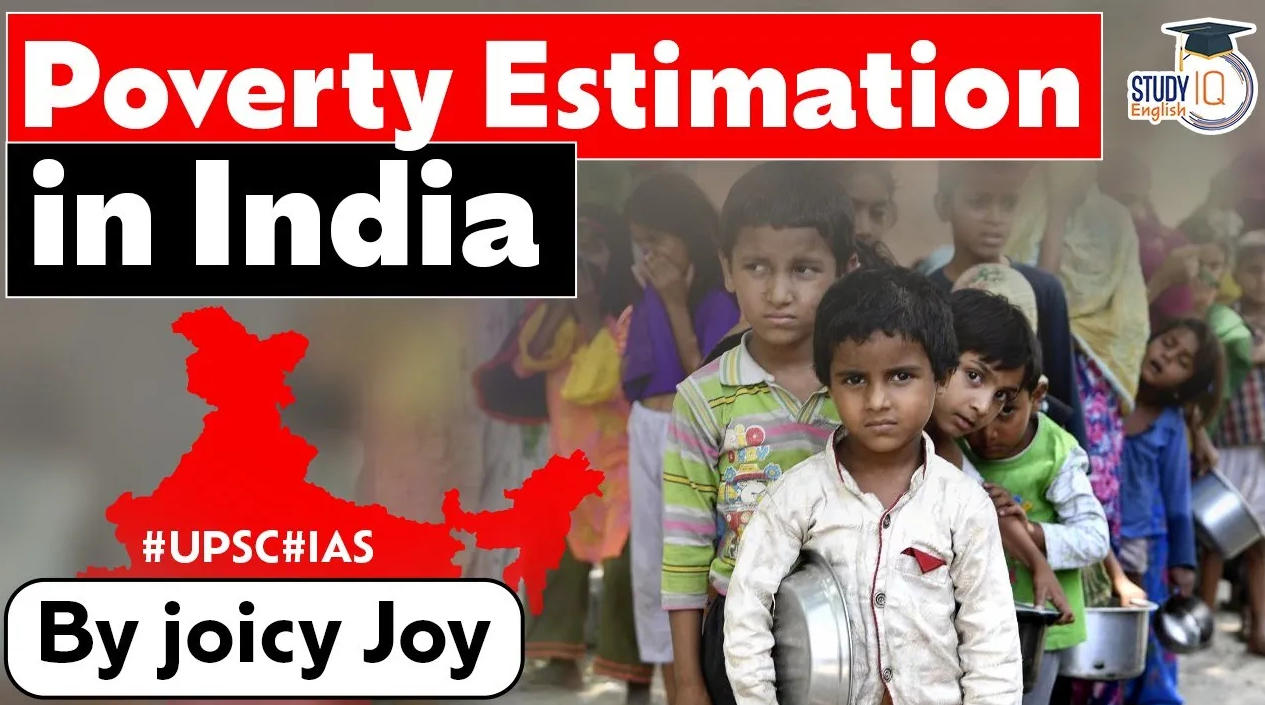Table of Contents

- In India, the most commonly used method to estimate poverty is through the measurement of income and consumption levels.
- A person is considered poor if his/her income level falls below a minimum level that fails to meet his/her basic needs.
- This minimum level is known as the ‘poverty line’.
- When the income or consumption of an individual or the household he/she belongs to fall below minimum level then they are designated to be Below the Poverty Line
- The Poverty Line calculation is now carried out by the NITI Aayog
WHY IS IT IMPORTANT TO IDeNTIFY THe POOR IN INDIA?
- To Measure the Impact of Welfare Schemes: It is important to estimate poverty as it helps to keep track of the impact and success of various government schemes that have been introduced to eliminate poverty.
- Its a part of a Poverty Elimination of Plan: The poverty estimates are used to formulate new plans that will ensure the elimination of poverty from the society.
- It’s a Constitutional Requirement: As the Constitution of India promises a just and equitable society, estimation of poverty paves the way for such a society as it helps in identifying the vulnerable sections of society an easy task.
DATA COLLeCTION MeTHODS FOR POVeRTY ESTIMATION
- Uniform Resource Period (URP): From 1993 -1994, the poverty line was based on a Uniform Resource Period, which involved asking people about their consumption expenditure across a period of over 30-days
- Mixed Reference Period (MRP): From 2000 onwards, the NSSO relied on an MRP method which measured consumption of five-low frequency items over a period of 30 days.These items are clothing, durables, education and institutional health expenditure.
VM DANDEKAR AND N RATH
- Based on the data from the National Sample Survey (NSS) data VM Dandekar and N Rath made a systematic assessment of poverty in 1971.
- While the previous estimations had stressed on subsistence living or basic minimum needs as a criterion for the poverty line,VM Dandekar and N Rath suggested that the poverty line’s criteria must be based on the expenditure that would provide 2250 calories per day both in rural and urban areas.
Alagh Committee (1979)
- The Taskforce constituted by the Planning Commission under the direction of YK Alagh, constructed a poverty line for rural and urban areas on the basis of nutritional requirements and related consumption expenditure.
- The estimates in the ensuing years would be adjusted taking into account the price level for inflation.
LAKDAWALA COMMITTEE (1993)
- The Lakdawala committee based their findings on the assumption that the basket used to calculate Consumer Price Index-Industrial Workers (CPI-IW) and Consumer Price Index-Agricultural Labourers (CPI-AL) reflected the consumption pattern of the poor
- Expert Group on ‘Estimation of Proportion and Number of Poor’ – Chaired by Prof DT Lakdawala (former Deputy Chairman Planning Commission)
- The Lakdawala Committee submitted the report in 1993 and recommended:
- Poverty Line approach can be continued based on calorie consumption (fixed consumption basket)
- State-specific poverty lines should be constructed and these should be updated using the CPI-IW in urban areas and CPI-AL in rural areas
- Scaling of poverty estimates should not be based on National Accounts Statistics. The Expert Group recommended only NSS data should be relied upon.
- The Indian Government accepted the Lakdawala Committee recommendations with minor modifications in 1997.
TENDuLKAR COMMITTEE (2009)
- This committee chaired by Suresh Tendulkar gave the following recommendations
- A shift away from calorie consumption-based poverty estimation
- A uniform poverty line basket (PLB) across rural and urban India
- A change in the price adjustment procedure to correct spatial and temporal issues with price adjustment
- Incorporation of private expenditure on health and education while estimating poverty
- The committee used the Mixed Reference Period as opposed to Universal Reference Period used by earlier committees.
- Using this method the committee arrived at a conclusion that the poverty line was at Rs.446.68 per capita per month in rural areas and Rs. 578.80 per capita per month in urban areas from 2004-2005.
- In 2009-2010 it was Rs. 859.6 in urban areas while it was Rs.672.8 in rural areas.
- In 2010-2011 it was Rs. 1000 for urban and Rs. 816 for rural areas.
C RANGARAJAN COMMITTEE (2012)
- The Planning commission created a new panel on poverty estimation that would
- Provide an alternate method to identify poverty levels
- Examine divergences between the consumption data provided by the NSSO and the National Accounts aggregates
- Review of international poverty estimation methods
- Recommend how these methods can be linked to eligibility for various poverty elimination schemes created by the government of India
- The committee submitted its final report on 2014.
- The report dismissed the Tendulkar Committees estimation of the poverty level in India.
- The report said that was much higher in 2011-2012 at 29.5% of the population, which means that three out of 10 people in India were poor.
Indian Economy | Free PDF






















 WhatsApp
WhatsApp